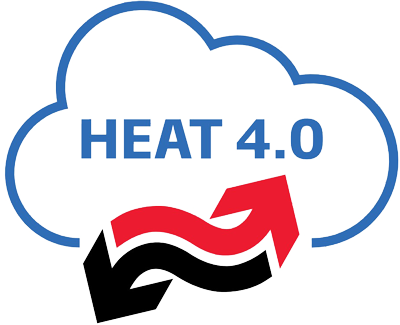Research-based solutions
In relation to HEAT 4.0, research has often been concerning representing system components by mathematical models. There are different ways to do so. Below you will find the most promising results from the research in the HEAT 4.0 consortium and a complete list of scientific results at this link.
Data-driven algorithms: by DTU Compute, also called grey-box modelling, which are simplified models that can run very fast to analyse a wide range of possible situations and control on basis of the most probable. These simulation models are based on statistic and stochastic methods, where data from the running system, the district heating or parts of it, is used to ‘learn’ the system’s behaviour from actual situations. This method is applied for the prediction of all district heating components as applied amongst others in the prediction and forecast software of HEAT 4.0 partners and for the Cross System Optimization solution of HEAT 4.0.
Digital twins simulation models based on semantic data from Building Information Models (BIM), applied for the design and representation of buildings. The digital CAD models (drawings) of buildings are exported to semantic representations that enable a transformation into simulation models, also called digital twins. These models can then be applied to simulate building behaviour, forecast demand for the district heating and more. DTU Byg developed a methodology within HEAT 4.0, implementing this procedure. No commercial application has been developed on basis of this research yet.
Planning does use mathematical models that can be run over long periods. Hence models are simplified to represent the most important aspects of the system over longer periods, whereas fast-changing characteristics are ignored. DTU Management applies such models for the analysis of long-term scenarios of e.g. investments into district heating, energy planning in regions and national energy models.
Researchs at Aarhus University has focused a lot on the building stock of district heating and methodologies of aggregating the thousands of individual buildings into e.g. types of buildings that then represent many buildings under one representing the model. This makes the estimation of heat load and other behaviours of buildings in given areas much faster and more useful for district heating. The applied models are very detailed and dynamic and take time. Therefore, such models can be applied for short and long-term planning, but are too slow for control of district heating and often, even buildings.
